When Science Fiction Meets Fairy Tale
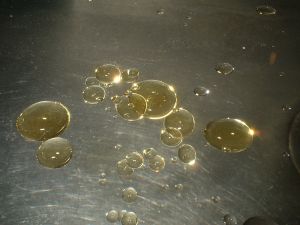 At first glance, science fiction and fairy tales appear to have little in common. They’re like water and oil. What could tales about nasty step-mothers and magic share with stories of high-tech gadgets and trips to other worlds?
At first glance, science fiction and fairy tales appear to have little in common. They’re like water and oil. What could tales about nasty step-mothers and magic share with stories of high-tech gadgets and trips to other worlds?
For starters, both address themes of human experience through the fantastic, and both bear the imprint of the culture of their time. Consider the similarities between fairies and aliens. (I realize not all fairy tales include fairies and not all science fiction stories feature aliens.) If someone today claims strange beings abducted and experimented on them, our first impulse would be to think alien abduction. Something from another world out there in the stars did this. For someone from the middle ages, the obvious culprits would be fairies–intelligent, formidable, human-like creatures from another world that sometimes cross into ours. These motifs are common to fairy-lore stories such as “Sir Orfeo” and “Tam Lin.” Fairies and aliens are not all that different, more like cream and coffee. Maybe we should mix them.
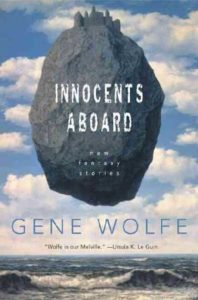 A fellow speculative fiction writer recommended Gene Wolfe’s work to me a couple years ago. I wish I had known about Wolfe earlier. His amazing stories span the gamut of horror, fantasy, and science fiction. He’s also adept at mixing genres, and one of my favorite stories, “Under Hill,” weaves together classic fairy tale and science fiction motifs into a surprising and satisfying whole. (If spoilers bother you, read the story first. You can find it online or in Wolfe’s collection Innocents Abroad.)
A fellow speculative fiction writer recommended Gene Wolfe’s work to me a couple years ago. I wish I had known about Wolfe earlier. His amazing stories span the gamut of horror, fantasy, and science fiction. He’s also adept at mixing genres, and one of my favorite stories, “Under Hill,” weaves together classic fairy tale and science fiction motifs into a surprising and satisfying whole. (If spoilers bother you, read the story first. You can find it online or in Wolfe’s collection Innocents Abroad.)
The story begins with Sir Bradwen setting off from Camelot to rescue a damsel imprisoned atop a hill of glass. Bradwen pursues his quest with dogged determination, crossing land and sea. He seems to get closer without ever reaching his destination which always remains a few days’ travel away.
And yet . . .
The tale gained substance at each new place. The size of the hill diminished. Likewise the difficulty of the lower slopes. It was not merely of glass, but of green glass of about the color of this leaf, sir. The princess, once only a beautiful lady from a remote country, gained a name: Apple Blossom.
Wolfe is playing with some classic fairy tale elements here. Several fairy tales make use of a woman atop a glass hill. The motif is common enough to warrant its own Aarne-Thompson type: 530, The Glass Mountain. Apples of some sort often play a prominent role in these stories.
 Bradwen eventually encounters a wool merchant who has seen the hill of glass and gives Bradwen directions. He finds the damsel and the hill but discovers he cannot scale it. He enlists the aid of some carpenters from a nearby village to build a type of ladder. Notice that Bradwen uses “technology” to solve his problem rather than magic, a subtle infusion of science into the fairy tale world.
Bradwen eventually encounters a wool merchant who has seen the hill of glass and gives Bradwen directions. He finds the damsel and the hill but discovers he cannot scale it. He enlists the aid of some carpenters from a nearby village to build a type of ladder. Notice that Bradwen uses “technology” to solve his problem rather than magic, a subtle infusion of science into the fairy tale world.
The work, of course, takes longer than expected. To pay the workmen, Bradwen resorts to collecting tolls from travellers. I love this aside, which recounts the not-so-noble knight stealing from the wool merchant to finance his self-serving quest.
After much building, Bradwen climbs to the castle atop the hill. Apple Blossom invites him inside to enjoy the food she takes daily from a “magic box.” When the princess touches the latch, the floor opens below them. They fall into the hill’s center where they encounter not the world of faerie but a very strange one nonetheless. They meet the future, science fiction, a world of time travel and thought-controlled devices.
A very small man with a very small face in a very large head approached them riding in a silent and ugly little cart with invisible wheels.
Apple Blossom identifies him as the man who abducted and imprisoned her. The man calls himself 12BFW-CY- and claims to be from the remote future, when humankind is on the verge of extinction. He offers Bradwen a weapon called a paciforcer which causes anyone who has been “paciforced” to become non-violent and to pass that trait onto future generations. Bradwen, the man of war and violence, is reluctant to take it, but 12BFW-CY- threatens him until he agrees.
“You may trust me,” Sir Bradwen declared, “to do the right thing.”
Indeed, what is the “right thing”? Will the schemes of the future overpower the momentum of the past? Wolfe’s clever combination of fairy tale and science fiction gives us much to think about.
– – – – –
 Jeff Chapman writes software by day and speculative fiction when he should be sleeping. Tales of Woe and Wonder, available in the Amazon Kindle store, collects nine of his fantasy stories. He lives with his wife, children, and cat in a house with more books than bookshelf space. You can find him musing about words and fiction at his blog or follow him at Twitter, his Amazon author page, or Goodreads.
Jeff Chapman writes software by day and speculative fiction when he should be sleeping. Tales of Woe and Wonder, available in the Amazon Kindle store, collects nine of his fantasy stories. He lives with his wife, children, and cat in a house with more books than bookshelf space. You can find him musing about words and fiction at his blog or follow him at Twitter, his Amazon author page, or Goodreads.































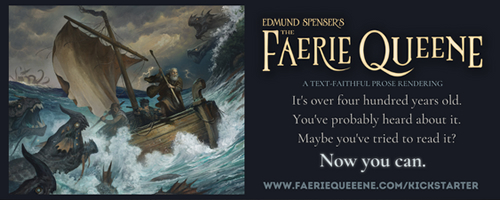


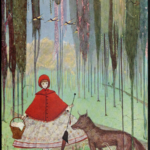
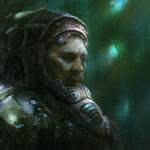
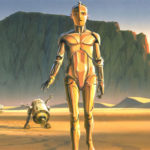





The alien = fairies question dawned on me when I read Enchanted Glass by Diana Wynne Jones. The kid is being stalked by the Unseelie fey, and some kids who see them call them aliens, because they’re tall and thin with a bit round head and oval eyes. Which freaked me out, because fairies were always abducting people the way aliens do today. (Demons! They haven’t even changed their lie, only the word people call them!)
Anyway, I agree about science fiction and fairytales. Steven Moffat, head writer of Doctor Who right now, says that he wants to make it more fairytale and less science fiction. And it’s been lovely and magical.
Even more than that, what does Eleven say to the sleeping Amy Pond in the season five finale:
We’re all stories in the end. Just make it a good one, eh? Cause it was, you know. It was the best.
And earlier in the season, when River warns the Doctor about the Pandorica, he laughs and says “That’s a fairy tale”
River’s answer? “Aren’t we all?” That’s one reason Matt Smith’s seasons have been my favorite of NuWho: because he takes the best elements of fairy tales and sets them in scifi, giving them a new richness.
I’d never thought of the fairy/alien connection. Very interesting! And the use of a ladder as “technology.” What an interesting observation. Makes me think there is a boatload of story ideas within the less well-known fairytales.
Also, Donita Paul’s last book has some similarities to the Wolfe story you looked at, Jeff. Makes me wonder if she in fact did take some inspiration either from his story or from the fairytales which influenced him.
Becky
Hey — I think all of the NuWho have been fairy tales — Ten was every bit as fairy tale-ish as Eleven — the Doctor finally starts admitting it as Eleven.
And for that matter — the whole flying-through-space-and-time-in-a-blue-wooden-box thing has been a fairy tale from the beginning.